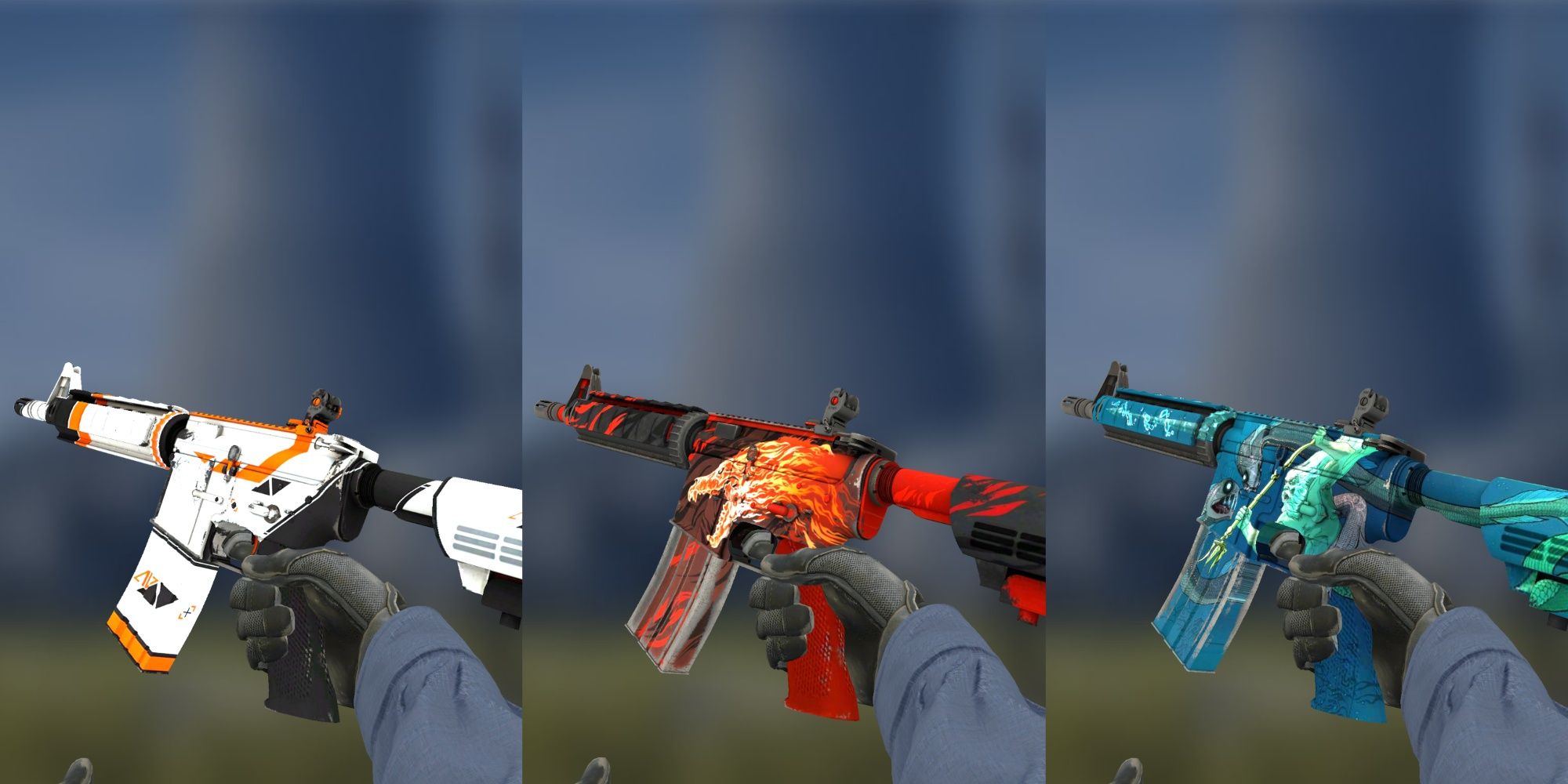79tka Insights
Your go-to source for the latest news and information.
How CSGO Skins Turned Gamers into Fashion Icons
Discover how CSGO skins transformed gamers into trendsetters and reshaped virtual fashion. Step into the stylish world of digital wardrobes!
The Evolution of CSGO Skins: From Game Assets to Fashion Statements
The evolution of CSGO skins has transformed from mere in-game assets into a multi-billion dollar fashion phenomenon. Initially introduced as simple cosmetic items to enhance a player's weapon visuals, these skins quickly gained traction within the gaming community. Players began to appreciate the uniqueness and rare designs, leading to an expansive marketplace where players could buy, sell, and trade these digital aesthetics. With Valve's implementation of the Steam Market, the possibilities for CSGO skins skyrocketed, allowing players to express their individuality through their weapon choices.
Today, CSGO skins serve not only as gameplay enhancements but also as cultural symbols within the gaming world. They have transcended their original purpose, becoming collectible items and even status symbols among gamers. The rise of renowned skin creators and the introduction of skin gambling further fueled this trend, pushing the boundaries of how players interact with their digital possessions. As a result, what started as a simple gameplay feature has evolved into a vibrant subculture where CSGO skins are akin to high fashion—reflecting personal style, investment opportunities, and a sense of community among players.

Counter-Strike is a competitive first-person shooter game that has captivated players around the world. It involves teamwork, strategy, and quick reflexes. However, players might encounter issues like when they see "cs2 vac was unable to verify" which can disrupt their gaming experience.
How CSGO Skins Influenced Gamer Identity and Personal Style
The world of CSGO skins has evolved far beyond mere cosmetic changes in the game; they have become a critical component of gamer identity and personal style. As players engage in matches, their choice of skins reflects not only their aesthetic preferences but also their personalities and status within the gaming community. For many, sporting rare and unique skins can signal a high level of skill and commitment to the game, often leading to a hierarchy based on the rarity and desirability of these virtual items. This phenomenon gives rise to a culture where the selection of a player's skin becomes a statement of individuality, akin to a fashion choice in the real world.
Moreover, CSGO skins have forged connections among gamers, fostering a sense of belonging and community. Through skin trading, players often bond over mutual interests, sharing tips on their favorite designs or discussing market trends. This communal activity not only enhances their gaming experience but also allows them to express their unique style. As such, skins have transformed into more than just in-game assets; they have become a form of self-expression that influences how players perceive themselves and are perceived by others in the virtual landscape. The intertwining of digital identity and personal style through these skins is a testament to the evolving nature of online gaming culture.
Are CSGO Skins the Future of In-Game Fashion?
As the landscape of gaming continues to evolve, CSGO skins have emerged as a significant aspect of in-game fashion. These digital collectibles are more than just aesthetic enhancements; they represent a personalized gaming experience, allowing players to express their individuality within the virtual realm of Counter-Strike: Global Offensive. With the rise of esports and streaming platforms, the demand for unique and visually striking skins has soared, positioning them at the forefront of gaming culture. This new era of in-game fashion is not just about appearance; it also intertwines with the concepts of rarity, value, and community engagement.
Beyond their role as simple cosmetic upgrades, CSGO skins are becoming a symbol of status within the gaming community. Players are increasingly willing to invest real money into acquiring rare skins, turning them into valuable assets that can gain or lose value over time. This trend is mirrored in the larger financial landscape of digital assets, where virtual goods can manifest real-world value. As developers and gamers alike continue to embrace this phenomenon, one can’t help but wonder: are CSGO skins paving the way for a new form of in-game fashion that could inspire similar innovations across other games?